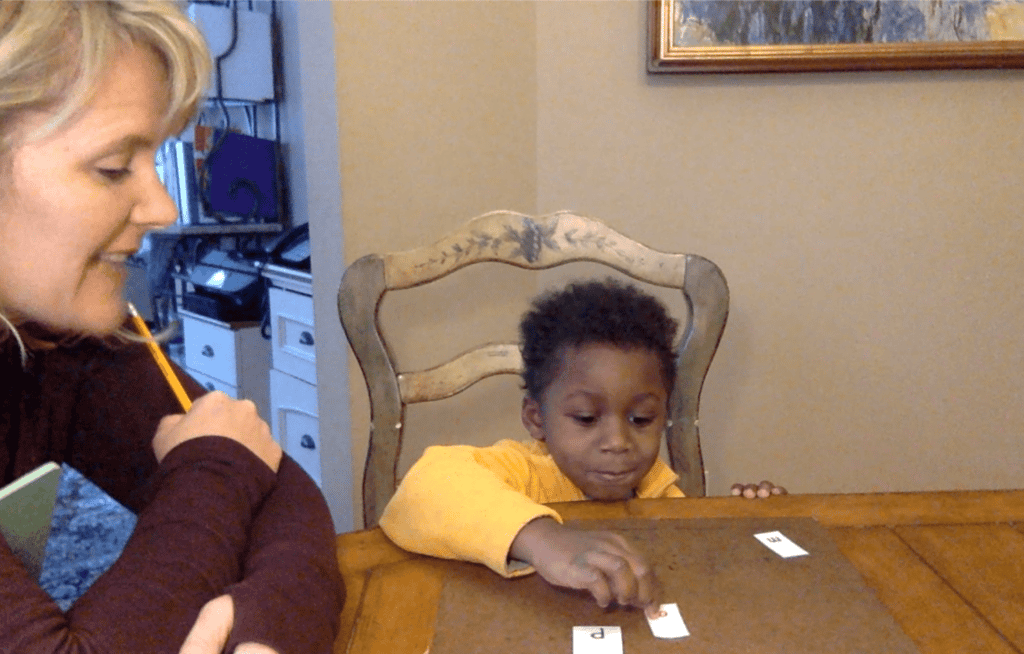
After, and along with, the essential task of learning oral language, learning to read words should begin with the alphabetic principle.
Much of what has been mainstream for decades in early literacy learning is inefficient and not in tight alignment with how the brain learns to read.
In this 2nd installment of our Science Shorts, consider how the alphabet has done you wrong. ???? Instead, begin with the alphabetic principle—the concept that our written language is a code for sounds. [If you missed our 1st Science Short, head here.]
Watch the 5 minute video below (or read for more depth below); note how even a 3 year-old can get the concept of the alphabetic principle in the example lesson:
Science Shorts #2–Decoding Begins with the Alphabetic Principle
Unlock Our Code with the Alphabetic Principle
In the U.S. culture, the first rite of passage on the way to learning to read is learning the alphabet. We start with “a” and build till we get to “z.” The alphabet song is often part of this ritual.
[Most other cultures, such as the UK and Spanish-speaking countries, however, begin with letter-sounds!]
While research does indicate that early learning of letter names and/or letter sounds helps early reading acquisition, research also directs us to more generally understand how the brain learns to read. In brief, good readers quickly learn to crack the alphabetic code–transforming spellings to sounds (or graphemes to phonemes).
The letter names themselves (i.e., “m” = /em/, “h” = /aytch/, or “b” = /bee/) can occlude, or hide, this alphabetic code:
How does a 3, 4, or 5 year-old armed with just letter names “get” how to read the word, “cat?”
“cat” = /see ay tee/
There's no code in that translation!
Thus, when we begin training young children in the alphabet and letter names first, we create an unnecessary block. Just diving into how to build words with letter-sounds, however, provides a natural entrée to learning how our code works!
[I've written more about this issue, and what to do instead here and here.]
Build It Teaches Alphabetic Principle (& more!) Easily
In the video above, we see a 3 year-old discover the alphabetic principle via a game-like activity we call Build It.
When the teacher draws his attention to the sounds in the word, such as “map,” he's in the early stage of getting the alphabetic principle.
But he also needs to have a hint of phonemic awareness and letter-sound knowledge to really cement the concept that our written language is a code for sounds. In the video snippet above, he's not a master yet by any means, but he's well on his way since he has demonstrated partial:
- understanding of the alphabetic principle,
- phonemic segmentation of 3-sound words,
- letter-sound knowledge (just consonants and a short vowel for now), &
- left-to-right tracking.
Build It, like other Reading Simplified word work activities, incorporates multiple reading sub-skills simultaneously–from the beginning. This integration of skills makes more sense to children…
…and even dramatically accelerates the early learning process!
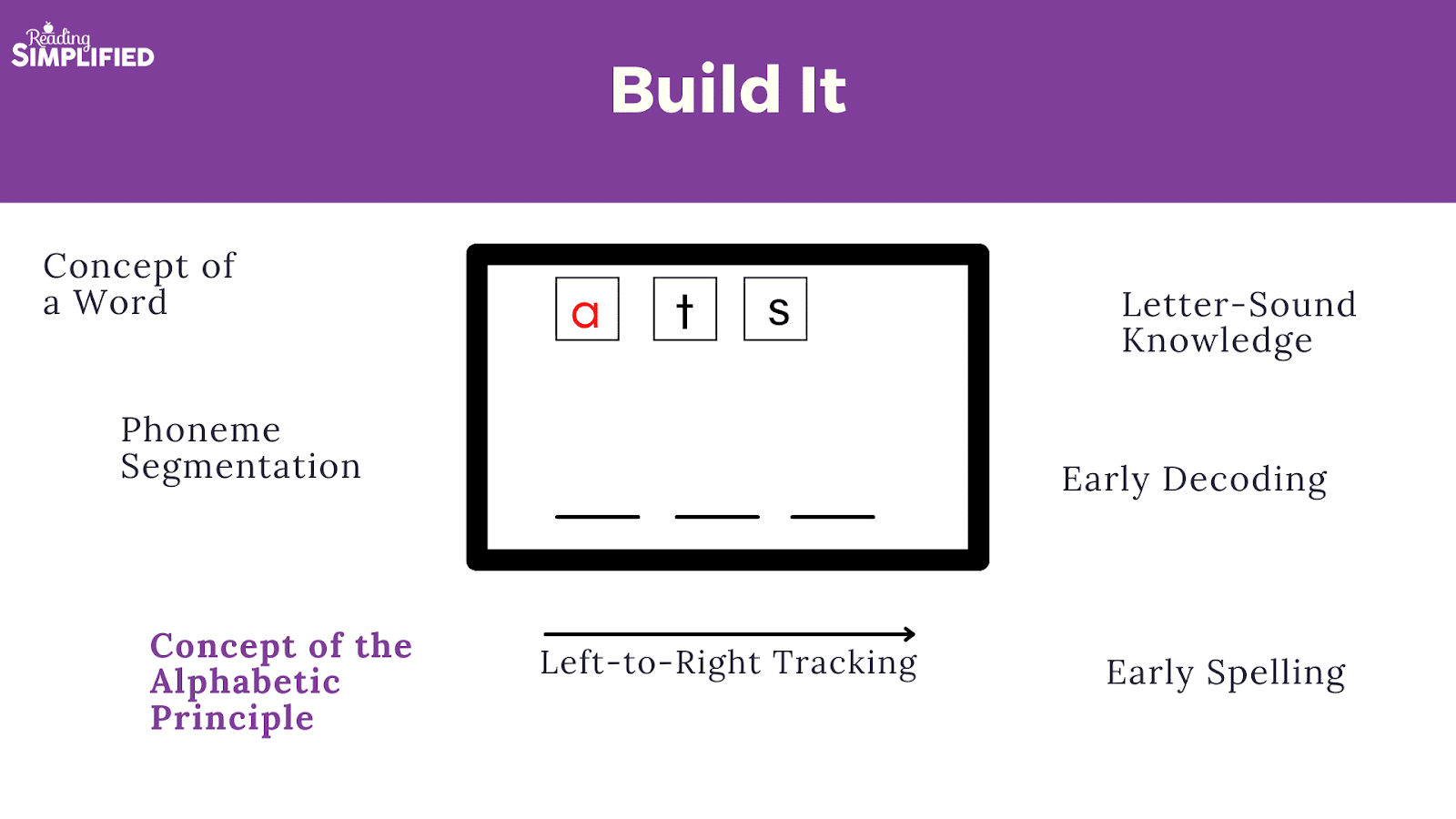
If you want to see how confidently and rapidly a young child can grasp the alphabetic principle (and other early reading sub-skills), watch this 5-day mini-experiment of just 1 activity a day for about 8 minutes with a 4 year-old….
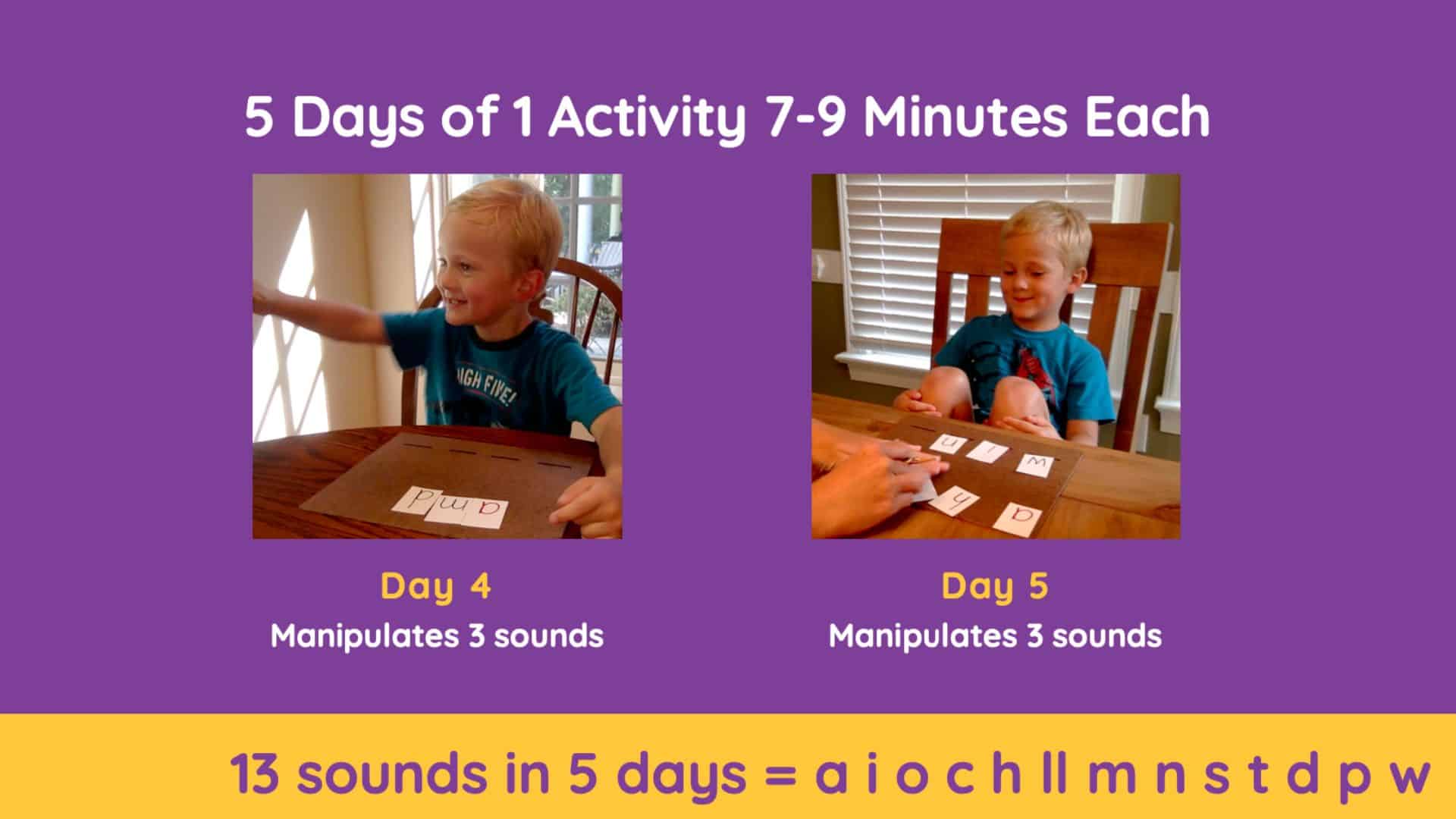
Games and Storybook Print Referencing Demonstrate the Alphabetic Principle
While Build It is powerful, we also suggest other supportive activities in the toddler, preschool, and kinder years to build the early reading skills needed to allow for strong early reading acquisition, i.e.,
- the alphabetic principle,
- letter-sound knowledge,
- phonemic awareness, and
- a decoding strategy according to Dr. David Share's Self-Teaching Theory).
Play phonemic awareness games, or games with sounds, with children in the car, the bath, before bed, in the school hall, as a classroom transition, etc. Dr. Maria Montessori popularized one called “I spy.”
“I spy with my little eye something that begins with the sound /mmmmm/.”
Children can look around the room or the teacher/parent can present a few objects or toys in the front of the child for him to choose among.
In addition, occasionally when you're reading aloud a book to children, drag your finger along with the print as you speak. With a couple of phonemes, exaggerate and elongate the first sound in word, such a /mmmmmmmom/.
Researchers have even demonstrated that the simple act of referencing print as one reads aloud to children yields better early reading outcomes!
Here's more info about print referencing that aligns with the studies from Dr. Laura Justice and colleagues which does not emphasize much phonemic awareness per se, but we know preK kids can handle this and benefit from it.
Print referencing is ideal for young children early on in their journey of word learning. Once they know a little bit about decoding and encoding (spelling), they can actually take over responsibility for the doing the work.
[We have the ultimate guide for teaching reading to prek children here so please check it out for the broader picture, including the vital importance of building oral language.]
In sum, consider less emphasis on learning the alphabet in order as your starting point. Spend less time on the alphabet letter names.
Instead, when we focus first on the alphabetic principle with multi-goal activities such as Build It, phonemic awareness games, and print referencing, we will likely accelerate early reading acquisition. A good thing!

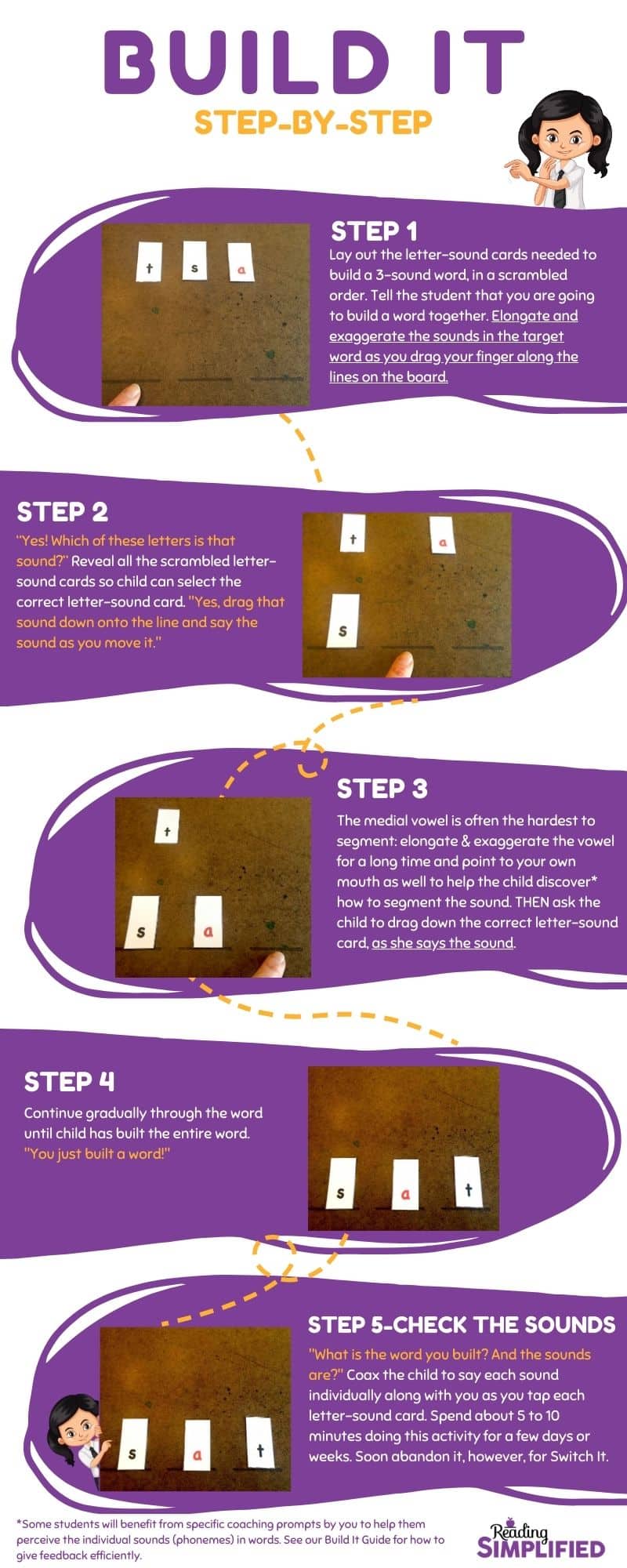


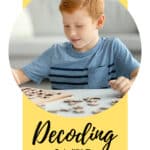


My grandson’s name is Charlie.
In getting him to recognise the initial letter of his name should we be introducing the letters that make up the phoneme “ch” to teach the beginning sound of his name?
Yes, I think that’s a good idea. I would put the “ch” on 1 card or piece of paper (and the “ie” as well) to help him build his name.
This emphasis on sounds first makes a lot of sense to me. A child can read and spell words without knowing the letter names, but cannot have success without knowledge of the sounds.
Exactly! Thanks for reading and sharing your thoughts Lesa!